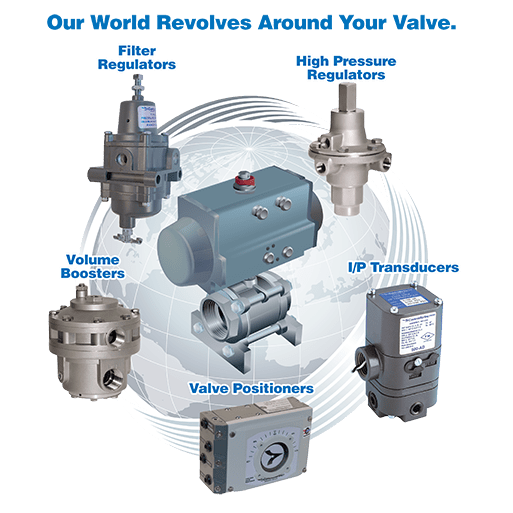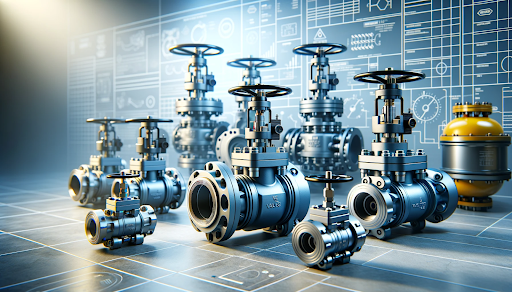Efficient Control Valves: Trick Components for Efficient System Administration
Efficient Control Valves: Trick Components for Efficient System Administration
Blog Article

Maximize Energy Cost Savings and Convenience With Advanced Building Automation Controls
In the realm of modern design and facility administration, the assimilation of advanced building automation manages stands as a critical advancement. The convergence of innovation and sustainability has birthed a new period where power efficiency, convenience optimization, and operational streamlining are no more distant goals however achievable truths. By harnessing the power of automation, buildings can adjust, react, and evolve in ways that were when unthinkable. The potential for considerable energy financial savings and enhanced comfort is not simply a possibility but a guarantee waiting to be met. This standard change in building monitoring holds the vital to opening a globe where environmental conscientiousness and owner well-being harmoniously exist together within the wall surfaces of our frameworks.
Power Performance Conveniences
Energy performance benefits can significantly minimize energy consumption and operational expenses in buildings. By applying energy-efficient techniques and technologies, building owners and drivers can attain substantial cost savings while additionally adding to ecological sustainability. One of the main advantages of improving energy performance in buildings is the reduction of utility costs. Energy-efficient systems, such as advanced structure automation controls, can enhance the use of resources like air conditioning, heating, and illumination, causing lower energy costs over time.
Moreover, improved energy performance can extend the life expectancy of building devices and systems. By operating more successfully, HVAC systems, lighting components, and other structure parts experience much less deterioration, resulting in reduced upkeep and replacement expenses. Additionally, energy-efficient structures commonly command greater residential or commercial property worths and rental prices, providing long-lasting financial advantages to owners.
Furthermore, power performance can enhance passenger convenience and efficiency. Appropriately managed indoor settings with ideal lighting and thermal conditions develop an even more pleasant and favorable work space, leading to improved worker complete satisfaction and performance. Generally, the energy performance advantages connected with advanced structure automation controls are multifaceted, incorporating price savings, ecological stewardship, and resident well-being.
Boosted Convenience Control
Enhancing comfort control in structure settings requires an innovative combination of sophisticated automation systems for optimal occupant well-being. By making use of sophisticated building automation controls, facilities can tailor the indoor environment to fulfill the certain needs and preferences of owners. control valves.
Enhanced convenience control surpasses basic temperature changes. It includes functions such as individualized setups, occupancy sensing units, and natural light usage to develop a responsive and vibrant atmosphere. By integrating these advanced controls, structures can not only boost comfort but additionally improve power performance by optimizing system operations based on real occupancy and usage patterns. Eventually, focusing on resident comfort through advanced automation systems leads to a much more delightful and much healthier interior environment.
Operational Efficiency Improvements

Additionally, the execution of real-time monitoring and analytics devices enables building operators to recognize energy ineffectiveness and operational anomalies her comment is here without delay. By continually monitoring energy usage patterns and system efficiency metrics, changes can be made in real-time to optimize energy intake and guarantee peak functional efficiency. control valves. Furthermore, incorporating need response techniques right into structure automation controls can better boost operational efficiency by dynamically changing power use based on grid conditions and rates signals
Indoor Climate Optimization
Efficient interior climate optimization is a fundamental aspect of structure automation controls, ensuring occupants' comfort and well-being while optimizing energy savings. By making use of advanced sensing units and controls, building automation systems can constantly keep track of and readjust temperature, humidity degrees, air quality, and ventilation to create an ideal interior setting. Keeping comfortable and constant problems not only improves owner contentment however also enhances productivity and general health.
Indoor environment optimization additionally plays an important duty in energy effectiveness. By fine-tuning heating, air flow, and cooling systems based upon real-time information and occupancy patterns, constructing automation controls can significantly minimize energy intake - control valves. Applying methods such as demand-controlled ventilation and thermal zoning can assist minimize power waste while ensuring that each location of the building obtains the needed conditioning.

Lasting Environment Development
Structure automation regulates not just optimize indoor you can try here climate problems for power efficiency and passenger convenience but also lay the foundation for developing a lasting environment through calculated monitoring of systems and resources. By integrating advanced building automation modern technologies, such as sensing units, actuators, and intelligent software, centers can readjust and check power usage in real-time to reduce waste and decrease their carbon footprint. These systems allow predictive maintenance, determining possible concerns before they intensify and enhancing equipment efficiency to enhance long life and effectiveness.
Moreover, lasting setting creation expands beyond power administration to incorporate water conservation, waste decrease, and indoor air high quality improvement. Structure automation controls can manage water usage, detect leakages, and ensure appropriate waste disposal techniques, contributing to total sustainability efforts. Additionally, by managing and keeping an eye on ventilation and purification systems, these innovations enhance owner wellness and efficiency while decreasing energy intake connected with HVAC operations.
Conclusion
In final thought, progressed building automation manages deal substantial benefits in terms of power cost savings, convenience control, operational effectiveness, interior climate optimization, and developing a sustainable environment. By applying these controls, buildings can attain optimal efficiency while decreasing power consumption and boosting occupant convenience. It is evident that using advanced automation innovation is critical in enhancing structure performance and producing an extra sustainable future.
Power performance advantages can significantly lower energy intake and operational costs in structures. Overall, the power effectiveness advantages connected with innovative building automation controls are diverse, including expense financial savings, environmental stewardship, and owner health.
In addition, including demand reaction strategies right into structure automation controls can further enhance functional performance by dynamically adjusting power use based on grid problems and prices signals.
Structure automation controls not just maximize interior climate problems for energy performance and passenger comfort yet likewise lay the structure for producing a sustainable setting with strategic monitoring of sources and systems.In verdict, progressed building automation controls offer significant benefits in terms of power financial savings, convenience control, operational efficiency, interior climate optimization, and producing a sustainable atmosphere.
Report this page